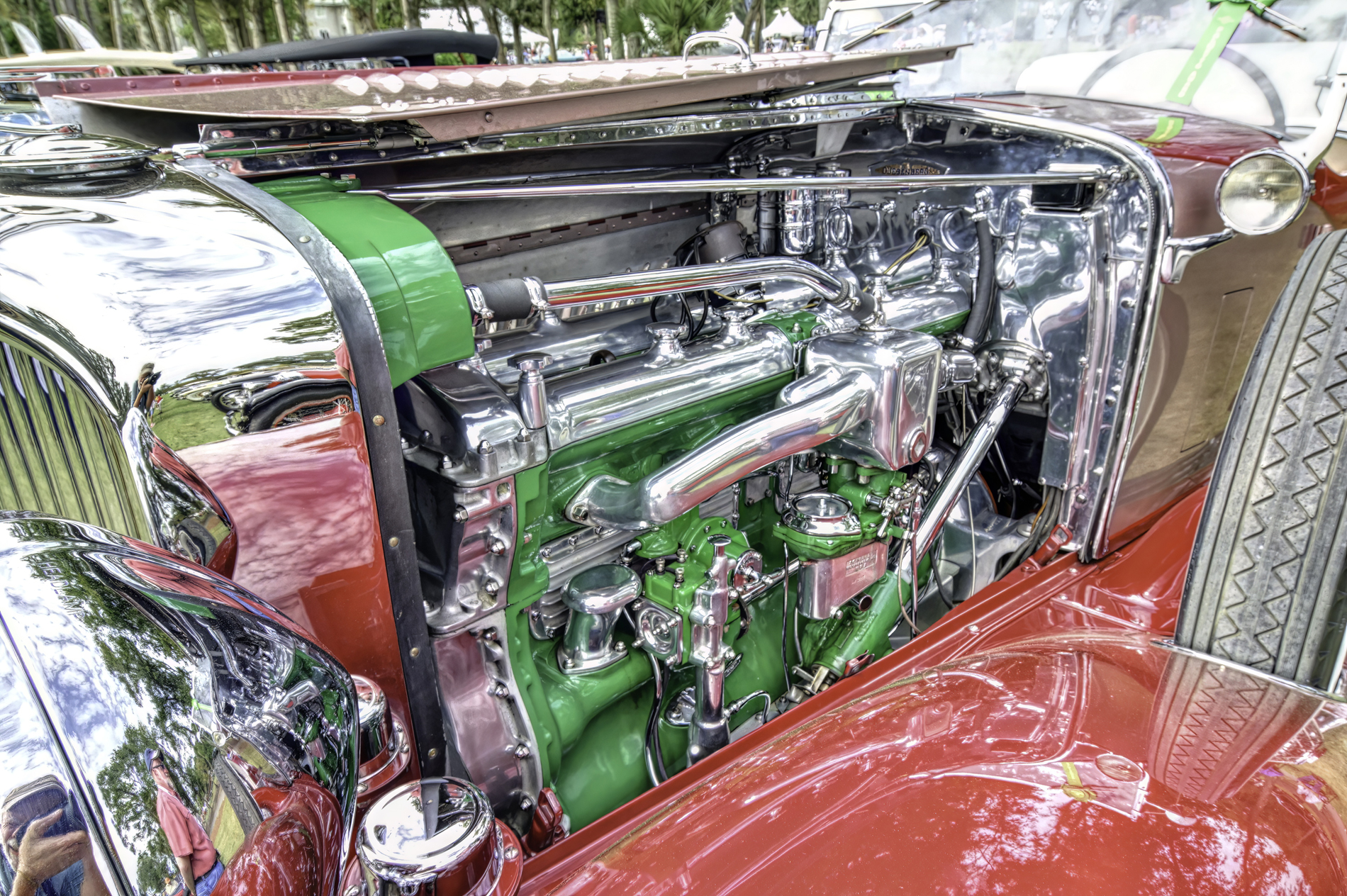
This 1930 Duesenberg J436 Dual Cowl Phaeton is one of two original long wheel base LeGrande Dual Cowl Phaetons known to exist. Originally purchased by Rudolph Bauer, an eccentric German artist after being released from prison, where he had been placed due to his support for America. This is one of three Duesenberg’s purchased by Bauer, until his death, J436 remained in a carriage house until 1952 when it was purchased by a family from Louisiana. The current owner purchased it in 1998 and completed a full restoration in 2000.
The 1930 Duesenberg J436 Dual Cowl Phaeton represents the pinnacle of luxury, performance, and craftsmanship from the golden age of American automobiles. With its powerful straight-eight engine, elegant design, and opulent interior, it remains an enduring symbol of automotive excellence. The Model J's historical significance, cultural impact, and timeless appeal make it one of the most celebrated and collectible classic cars ever produced.
Background
- Manufacturer: Duesenberg, Inc.
- Year: 1930
- Model: Model J
- Specific Car: J436 Dual Cowl Phaeton
Specifications
- Engine: The Model J is powered by a 6.9-liter (420 cubic inches) straight-eight engine. This engine produces around 265 horsepower, an extraordinary figure for its time.
- Transmission: It features a three-speed manual transmission.
- Chassis: The car is built on a robust and heavy-duty chassis designed to support its large body and powerful engine.
- Suspension: The front and rear suspension systems include solid axles with semi-elliptic leaf springs, typical of the period.
Design and Features
- Body Style: The Dual Cowl Phaeton is a luxurious and elegant open-top touring car with seating for four or more passengers. The dual cowl design includes a second windshield for the rear passengers, adding to their comfort and protection from the wind.
- Coachwork: The J436's bodywork was crafted by various prominent coachbuilders of the time, including Murphy, LeBaron, and others. These bespoke designs often featured exquisite details and luxurious materials.
- Interior: The interior is opulent, featuring high-quality leather upholstery, wood trim, and intricate detailing. The second cowl and windshield add a unique touch to the passenger experience, enhancing comfort and luxury.
Performance
- Speed: The Duesenberg Model J could achieve a top speed of around 119 mph (192 km/h), making it one of the fastest production cars of its era.
- Acceleration: It could accelerate from 0 to 60 mph in approximately 11 seconds, impressive for a vehicle of its size and weight.
- Handling: Despite its large size, the Model J offered excellent handling and stability, thanks to its advanced engineering and powerful engine.
Historical Significance
- Luxury and Prestige: The Duesenberg Model J was a symbol of wealth, success, and technological prowess during the late 1920s and early 1930s. It was owned by some of the most influential and affluent individuals of the time, including Hollywood stars, industrialists, and royalty.
- Engineering Excellence: The Model J was renowned for its advanced engineering, powerful engine, and superior build quality. It set new standards for luxury and performance in the automotive industry.
Legacy
- Collector's Item: Today, the Duesenberg Model J, especially the Dual Cowl Phaeton variants, are highly prized by collectors and automotive enthusiasts. They are often featured at prestigious car shows, auctions, and museums.
- Cultural Impact: The Duesenberg name has become synonymous with excellence and luxury. Phrases like "It's a Duesy" entered the American lexicon, highlighting the car's impact on popular culture.
You may purchase a print of the 1930 Duesenberg J436 Dual Cowl Phaeton in our dElegance 2018 online gallery.
The Vintage Automobile Article Index



